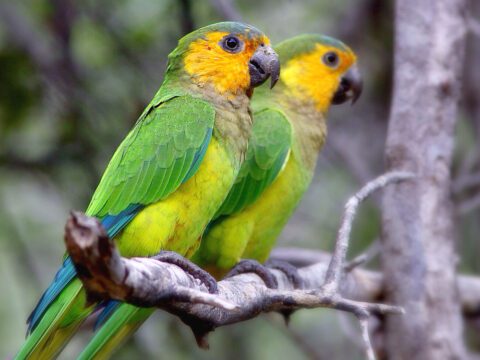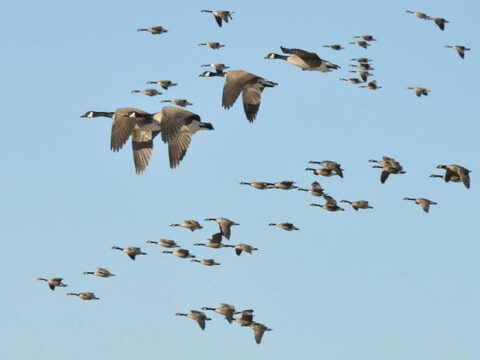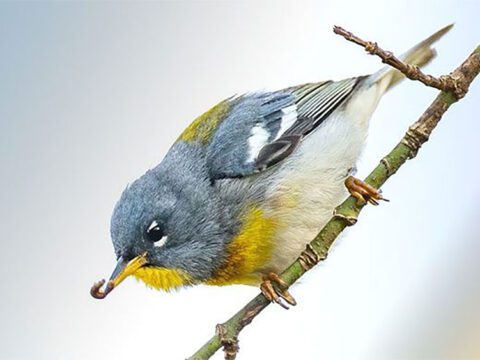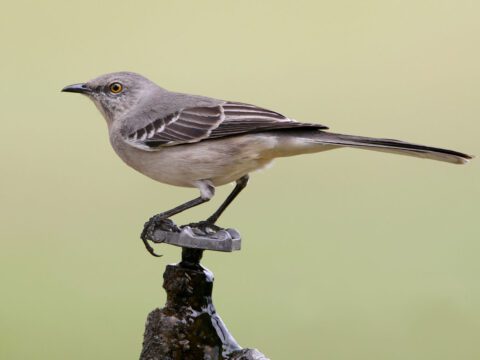Testing Testosterone on a Road Trip for Science [Meeting report]
By Wesley Hochachka, assistant director of Bird Population Studies August 21, 2012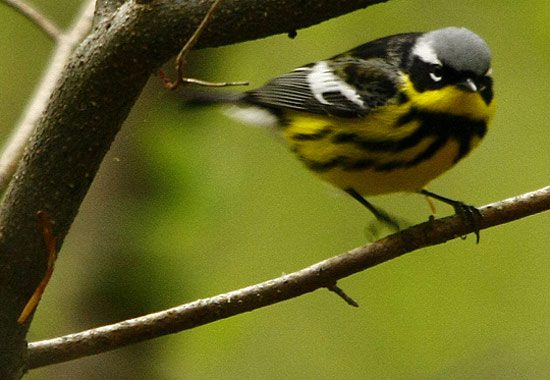
I’m here at the fifth North American Ornithological Conference, and I have a problem… mind you a rather nice problem. With the conference’s size (an estimated 1,500 attendees) comes the problem of too much choice. When I’m not meeting and talking with friends and colleagues old and new, I have to choose which of 10 parallel presentations I want to see. On a number of occasions I’ve had to make a decision to see one presentation while wishing that actually I could also see a second in another conference room somewhere else on the campus of the University of British Columbia.
At other times, like this morning, I’ve found myself at loose ends and wandered into a lecture room on the spur of the moment because a talk’s title struck me as interesting. In this case, the speaker was a graduate student, Kristen Covino, of the University of Southern Mississippi, and she was talking about her research at the junction between ecology and physiology.
Covino was looking at the way testosterone concentrations change in birds over the course of spring migration. Now, when I think about testosterone’s role as a hormone, I think of how it affects aggression, increases muscle mass, and other stereotypically “masculine” traits. However, both males and females produce testosterone, and it plays many essential roles in a bird’s body.
Many of these are related to migration: birds preparing for a season of long, nonstop flights have to add muscle mass, control their deposition of fat (their key fuel source), and “decide” when it’s time to start migrating. Testosterone also spurs male birds to sing, which is the reason why you may hear migrating birds singing well before they have arrived on their nesting grounds—an obvious indication the hormone is starting to circulate in higher concentrations.
However, to date, no one has asked whether a burst of testosterone triggers migration and all of its accompanying changes, or whether there is a gradual buildup of testosterone as birds, particularly males, travel northward in spring. Kristen and colleagues took a geographic approach to this question: they caught migrating Magnolia Warblers, Northern Waterthrushes, and Swainson’s Thrushes in southern Lousiana—still many hundreds of miles from their breeding grounds—and took a tiny blood sample to determine their testosterone levels. Then the scientists headed north to coastal Maine to do the same set of tests on birds that had nearly completed their migratory journeys.
What Covino found was that there was no simple and single pattern. Magnolia Warbler males and females had identical levels of testosterone in the bloodstreams, and these levels increased as the birds traveled northward. For Northern Waterthrushes (another warbler species) males had higher levels of testosterone by the time they reached Maine, but females didn’t. Testosterone levels were low and unchanged for Swainson’s Thrushes.
So what about this inconclusive result caught my attention? Findings like this are exciting to me because they tell us that these birds are not simple mechanical objects that all do the same thing. Instead, they’ve evolved to display clearly different responses to the same (hormonal) stimuli. And more generally, to me findings indicate that birds possess enough flexibility in their physiological makeup to adapt to changing conditions. By heightening or dampening the way their bodies respond to changing hormone levels, these birds may be able to adapt to some of the novel changes in the world around them over the years to come.

All About Birds
is a free resource
Available for everyone,
funded by donors like you
American Kestrel by Blair Dudeck / Macaulay Library

